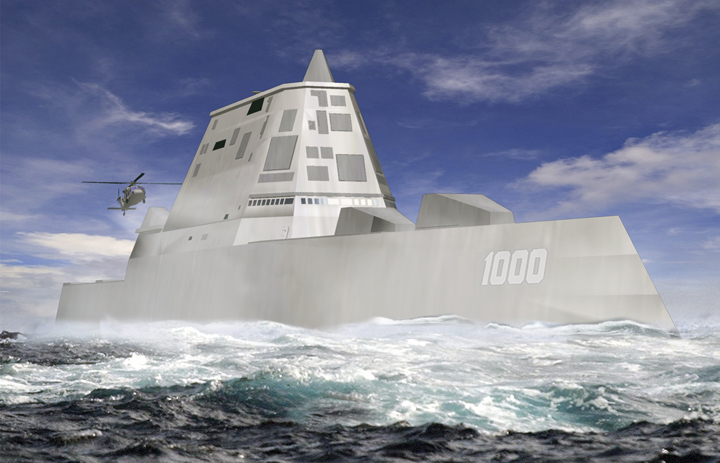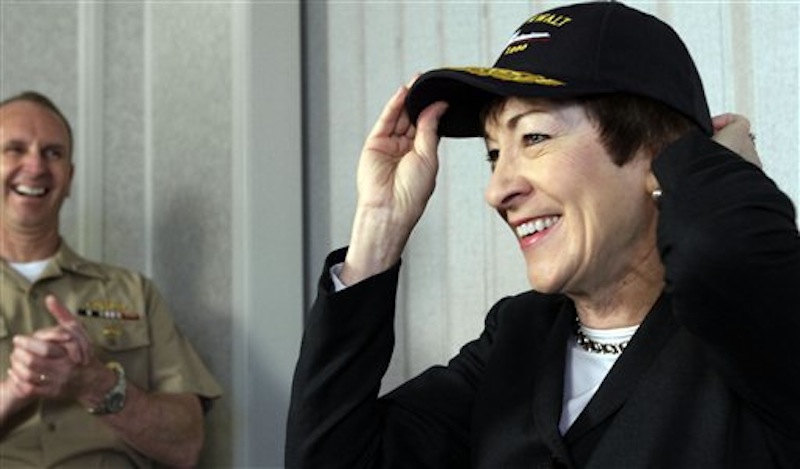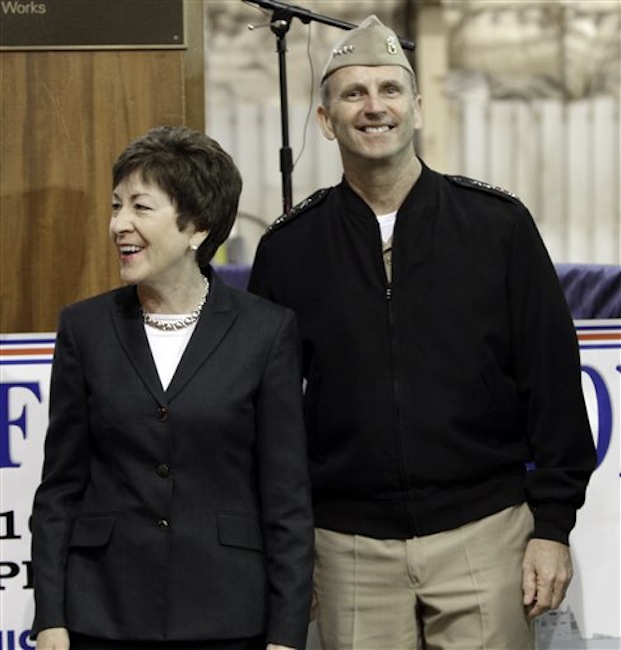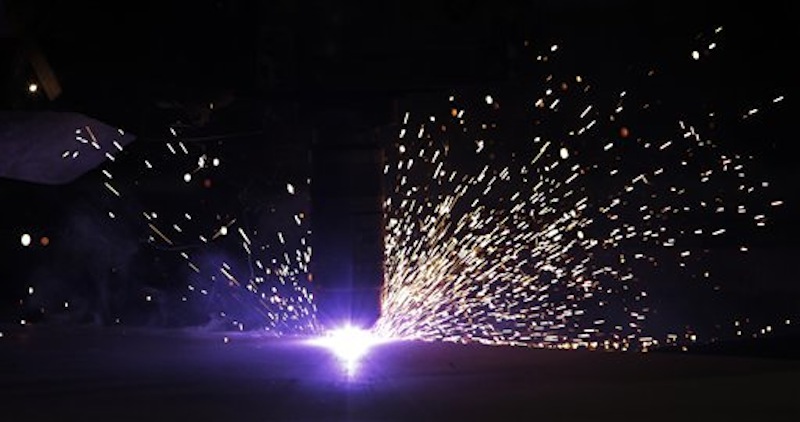BATH — Even though the Navy reduced its goal for overall number of ships, Bath Iron Works should stay busy over the coming years because the number of large warships like those built there would increase by 30 percent under the proposal, Sen. Susan Collins said Wednesday.
The 30-year plan unveiled last week would increase the number of “large surface combatants” — destroyers and cruisers — by a total of 16 ships, even as the total fleet size would be reduced from 313 to 300, Collins said. The Navy currently has about 285 ships.
“It’s a good start — a very good start,” said Collins, who joined Adm. Jonathan Greenert on his first visit to Bath Iron Works since becoming chief of naval operations.
Greenert viewed assembled hull segments of the future USS Zumwalt after participating in a ceremony marking the start of construction of the third and final warship in the line.
Once maligned for its high cost, the stealthy Zumwalt is now viewed as well suited to the Navy’s new focus on the Asia and the Pacific, where the U.S. intends to bolster its military presence in response to Asia’s growing economic importance and China’s rise as a military power.
The 600-foot-long warships are the largest destroyers to be built in Bath but will have an element of stealth because of their low-to-the-water profile. They feature 155 mm deck guns with rocket-propelled warheads that can hit targets 100 miles away.
They have electric-drive propulsion, an unconventional wave-piercing hull, new sonar system and the ability to launch multiple aerial drones, in addition to new strike capabilities. They’ll also require half the number of sailors to operate as existing Arleigh Burke-class destroyers.
“The DDG-1000 fits in perfectly with our strategy. It’s perfect for the Asia-Pacific,” said Greenert, who declared the futuristic warship to be “a marvel of engineering.”
While it’s technologically sophisticated, it’s also a symbol of defense programs that exceeded budget projections. The Navy had to truncate the program to just three ships because of spiraling costs, now estimated to be more than $3 billion per ship, compared to about $1.2 billion for the current class of ships.
After the three destroyers are built, the Navy will shift back to construction of Arleigh Burke-class destroyers, which are cheaper and have ballistic defense capabilities.
Collins, who serves on the Armed Services Committee and invited Greenert to tour the shipyard, said she’s seeking to have a 10th ship added to a nine-ship purchase for fiscal years 2013 through 2017. That could be more good news for Bath Iron Works, a General Dynamics subsidiary, and its 5,400 shipbuilders.
In general, the new focus on Asia could mean more dollars for the Navy, which has seen funding reductions during the wars in Afghanistan and Iraq, said Loren Thompson, a defense analyst at the Lexington Institute.
“The Obama administration’s shift to an Asia-Pacific strategy is very good news for the Navy. That probably means good news for Bath Iron Works, too,” he said.
While meeting with reporters, Greenert was asked about prospects that another Navy shipyard, the Portsmouth Naval Shipyard on the Maine-New Hampshire border, could be on the chopping block if there’s another round of base closings.
“Portsmouth fills a critical need for overhaul of our submarines and provides other things as well. I don’t see that need diminishing at all in the future,” he said.
Send questions/comments to the editors.






Success. Please wait for the page to reload. If the page does not reload within 5 seconds, please refresh the page.
Enter your email and password to access comments.
Hi, to comment on stories you must . This profile is in addition to your subscription and website login.
Already have a commenting profile? .
Invalid username/password.
Please check your email to confirm and complete your registration.
Only subscribers are eligible to post comments. Please subscribe or login first for digital access. Here’s why.
Use the form below to reset your password. When you've submitted your account email, we will send an email with a reset code.